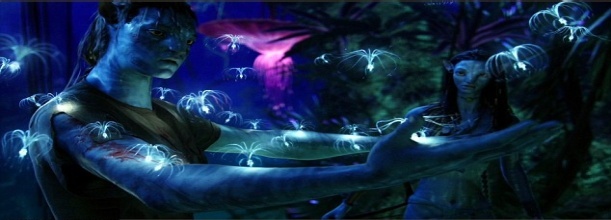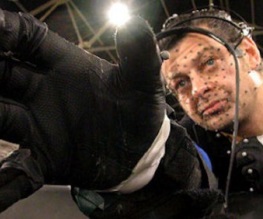Is performance capture in the same league as ‘real’ acting?

Performance capture veteran Andy Serkis has awed us again. His stunningly realistic performance as wronged chimpanzee Caesar in the Rise of the Planet of the Apes stole the spotlight from the star-filled live-action cast. Not for the first time either. With stellar performances depicting Gollum and King Kong in the not so distant past and the role of Captain Haddock in The Adventures of Tintin in the not so distant future, isn’t it about time the film industry acknowledged that performance capture roles are worthy of awards?

But firstly, what exactly is performance capture? Put simply, it is a type of software that sensitively translates an individual’s actions, down to the minutest movements and the subtlest expressions, into computer generated imagery (CGI) to add realism and personality to an animated character. The depth of detail available is truly astounding; Giant Studios (the technology providers for LOTR and Avatar) go so far as to map out the skeletal figure, transmitting bone length and density measurements for accurate depictions.
Academy awards exist in the category of Visual Effects, but this only applies to the film in its entirety rather than a specific character. This raises the point of whether it is the actor behind the CGI or the team behind the creation of the CGI who should be credited for the performance. Serkis seems to argue for both, “The first part is capturing the performance. Only later down the line do you start seeing the characters being painted over frame by frame using pixels.” With performance capturing becoming an increasingly common technique used by filmmakers, it seems appropriate that awards should be given to the actors who play these digital parts.

However Serkis doesn’t believe these roles should be given any special treatment, “Personally I’ve never believed there should be a separate category because the essence of the performance is pure acting.” Yet there are film traditionalists who argue that CGI and performance capture should be avoided completely. They believe that using CGI filters out the raw nature of the film; how can you accurately judge the components of a film if they are not real? Take the rumours surrounding Zoe Saldana’s role as Neytiri in Avatar for instance; whilst some claimed she deserved a Best Actress Award, others murmured about the fairness of such a claim, considering her whole performance was altered in post-production.
Yet surely these alterations still require a stupendous amount of hard work? James Cameron, director of Avatar, knows better than anyone how much time, effort and money needs to be invested into performance capture. Cameron desired to create such a perfect world that he actually co-developed a new generation of stereoscopic cameras which mimic the way human eyes view the world in three dimensions. This not only meant that the Avatar world was more realistic, but also gave performance actors one more thing to concentrate on.

So whilst some argue that performance actors have an easy day at work, other evidence suggests that this style of acting requires greater responsibilities than ‘raw’ acting. For example, it requires a substantial leap of the imagination to envisage oneself as someone else, let alone as something entirely inhuman, engaging with an alien world. An actor must believe this before an audience is able to. The actual process involves wearing a ‘mocap’ suit, complete with reflective reference markers to map their exact movements as well as headgear embedded with cameras to map their facial expressions. Easy, huh?
The pressure upon these actors is incredible; whereas in live action films there is usually a wide margin of error with which actors are allowed to play around with almost every aspect of their performance, performance capture characters tend to move in a specific way, with technology occasionally limiting the range of moves available. And of course, time is money in the film industry, but for performance capture films this rule is tantamount. Due to the sheer amount of technology involved, prices tend to spiral out of control, meaning actors have to work to tight timelines. Avatar, for instance, was given a meagre budget of $200 million which ended up snowballing into a whopping $300 million.
Robert Zemeckis, director of performance capture films Polar Express, Beowulf, and A Christmas Carol, argues that the Academy should create a new category of award to acknowledge these achievements. Just “like when Walt Disney made the first animated movie” which was acknowledged by an appropriate new category…62 years later.

However, there is no guarantee that performance capture films will be a success. The most recent total-performance capture title, Mars Needs Moms, (directed by Simon Wells and produced by Zemeckis), reportedly cost $150 million to produce, yet plummeted at the box office, taking only $21 million. One of the rumoured reasons for its failure is the somewhat unsettling way humans are portrayed. Indeed, this seems to be a popular critique of performance capture films in general. Sometimes an actor’s facial expression isn’t translated very realistically, resulting in a strange image of something inhuman trying to be human. This result is familiar to animators; they know how hard it is to recreate human expression in CGI. This is because humans are very sensitive to human expression; the closer an animation comes to imitating human likeness, the higher our expectations are raised. Sometimes, animators accidentally breach the unsettling zone of ‘the uncanny valley’, in which a character possesses so much human likeness, yet the audience knows that they are not human, causing feelings of an uncanny nature to settle.
This may explain why Andy Serkis has been so successful; all of his performance capture roles have featured inhuman characters in an otherwise live-action motion picture. However his next film, The Adventures of Tintin involves playing a human character, so it will be interesting to see if the magic he brings to the audience will remain.

Poor performance capture movies don’t seem to belong anywhere. They are obviously separate from the live-action films, as well as being shunned by the animated films too. The makers of Ratatouille even added “Our Quality Assurance Guarantee: 100% Genuine Animation! No motion capture or any other performance shortcuts were used in the production of this film” to their credit reel. So not only do they fear inclusion into this loner genre, but they also insinuate that performance capturing is a comparatively easier filming technique.
So whilst some argue that performance capture is downright weird, and others insist the unique style is the future of film-making, it appears that performance capturing has an unclear future. What with Disney pulling out of Yellow Submarine due to the colossal amount of money being spent, and Steven Spielberg/Peter Jackson’s 3D creation The Adventures of Tintin out this year, the public are being sent mixed messages on the potential success of these films.
Do you think performance capture has a glowing future? And do you think that performance actors should be awarded for their hidden performances behind this new technology? Let us know by attacking the comments section.





Recent Comments